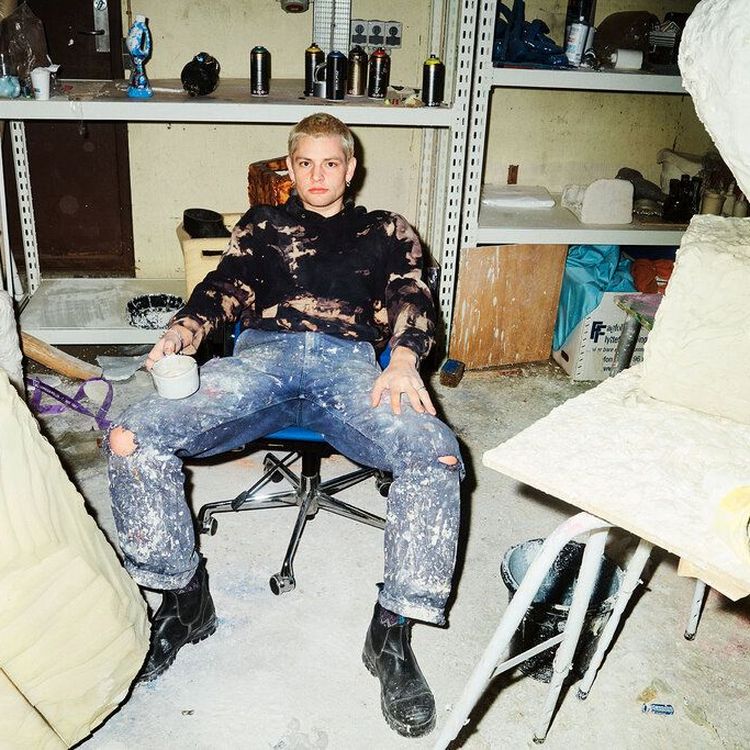The artist's inventive, large-scale works form the inaugural exhibition for the new Stockholm gallery
Oliver Sundqvist’s sculptures are rather unmissable. For one thing, they’re large – massive, in fact – big honking plaster-covered forms constructed from wood, metal, beer cans and anything else the Danish artist can get his hands on. “My studio is in front of a construction facility and there’s a big container of trash,” he says. “So sometimes, when I don’t have any ideas, I just go to the big container.” Drawing on the topsy-turvy motifs of the cartoons that flickered on the screens of his youth (“I think I watched cartoons until I was… maybe a bit too old”), Sundqvist’s works seem almost poised to spring to life. “It’s very difficult to do something that’s still that feels like it’s moving,” he says.
Advertisement
Currently, Sundqvist’s sculptures populate the inaugural show at Public Service Gallery, which opens its doors to, well, the public today. An impressive space, formerly a bank, the corner storefront offers the soaring ceilings necessary to house the artist’s large scale works, which, in addition to the plaster pieces, include whimsical, bulbous inflatables, inflated and painted by the artist (with the help of a couple of friends) on the gallery’s lower level. Dubbed 'Symphony Hour', namely for the way in which the works seem to communicate a deafening roar when viewed as a group, the show marks the artist’s most significant solo outing to date (he’s previously showed at V1 and Eighteen Gallery in Copenhagen, in addition to collaborations with both Roskilde Music Festival and Noma).

Photo: Pierre Björk

Photo: Pierre Björk

Photo: Pierre Björk
But back to the trash. “I very much like the idea of taking trash – stuff people threw out – and then making it nice again and selling it back to people,” Sundqvist muses. We’re sitting in the massive church hall of Soho House a few blocks from the gallery, which, when we meet, is still under construction. He wears a pair of well-worn brown leather trousers from Danish it-brand Sunflower and a raggedy long sleeve, his newly-dyed turquoise hair obscured by a Pirelli cap (“I do my own hair – this is my first time with blue. It can be dots, it can be leopard…”). Using the water glass, Coca Cola glass bottle and ceramic mug on the table between us, he offers me a little demonstration. “When you’re using forms that already exist, it gives a sort of naïveté,” he says, arranging the cups and glasses in half-hazard stack. “It gives a sort of childish look.”
Sundqvist has long since had quite the active imagination – the sort of imagination that could see a pile of trash and imagine a sculpture. Born in Stockholm but raised in Copenhagen, he grew up as somewhat of an only child (he has a half brother and a half sister, but they weren’t really around throughout his youth). “I’m a bit of a dreamer,” he says. “When I was very young, I used to be under the table when the grown-ups were sitting and having dinner. I was just talking to myself. I’d have an imaginary friend.” I ask if he ever chats with his sculptures in the studio. “I did catch myself being alone one night, talking to the sculptures.”

Photo: Pierre Björk

Photo: Pierre Björk

Photo: Pierre Björk
